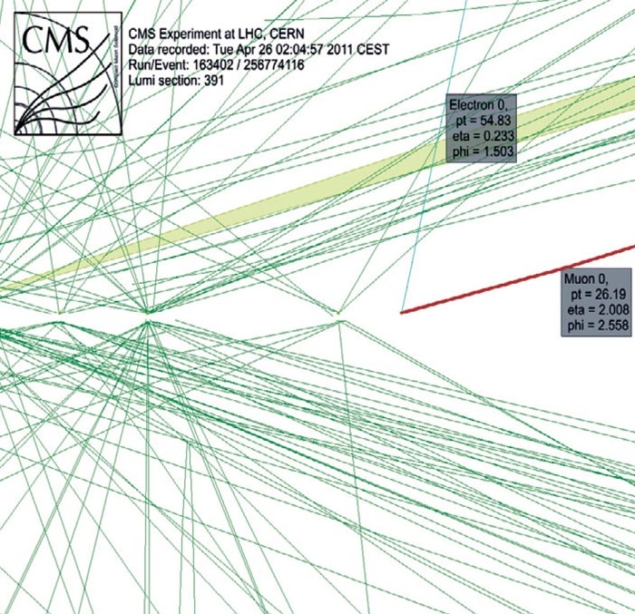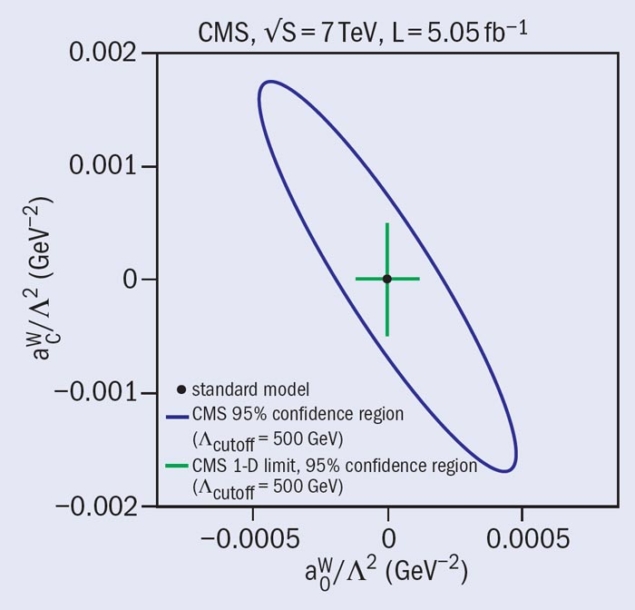In a small fraction of proton collisions at the LHC, the two colliding protons interact only electromagnetically, radiating high-energy photons that subsequently interact or “fuse” to produce a pair of heavy charged particles. Fully exclusive production of such pairs takes place when quasi-real photons are emitted coherently by the protons rather than by their quarks, which survive the interaction. The ability to select such events opens up the exciting possibility of transforming the LHC into a high-energy photon–photon collider and of performing complementary or unique studies of the Standard Model and its possible extensions.

The CMS collaboration has made use of this opportunity by employing a novel method to select “exclusive” events based only on tracking information. The selection is made by requesting that two – and only two – tracks originate from a candidate vertex for the exclusive two-photon production. The power of this method, which was first developed for the pioneering measurement of exclusive production of muon and electron pairs, lies in its effectiveness even in difficult high-luminosity conditions with large event pile-up at the LHC.

The collaboration has recently used this approach to analyse the full data sample collected at √s=7 TeV and to obtain the first direct evidence of the γγ→WW process. Fully leptonic W-boson decays have been measured in final states characterized by opposite-sign and opposite-flavour lepton pairs where one W decays into an electron and a neutrino, the other into a muon and a neutrino (both neutrinos leave undetected). The leptons were required to have: transverse momenta pT >20 GeV/c and pseudorapidity |η| < 2.1; no extra track associated with their vertex; and for the pair, a total pT >30 GeV/c. After applying all selection criteria, only two events remained – compared with an expectation of 3.2 events: 2.2 from γγ→WW and 1 from background (figure 2).

The lack of events observed at large values of transverse momentum for the pair, which would be expected within the Standard Model, allows stringent limits on anomalous quartic γγWW couplings to be derived. These surpass the previous best limits, set at the Large Electron–Positron collider and at the Tevatron, by up to two orders of magnitude (figure 3).
Further reading
CMS collaboration 2013 arXiv:1305.5596 [hep-ex], submitted to JHEP.







